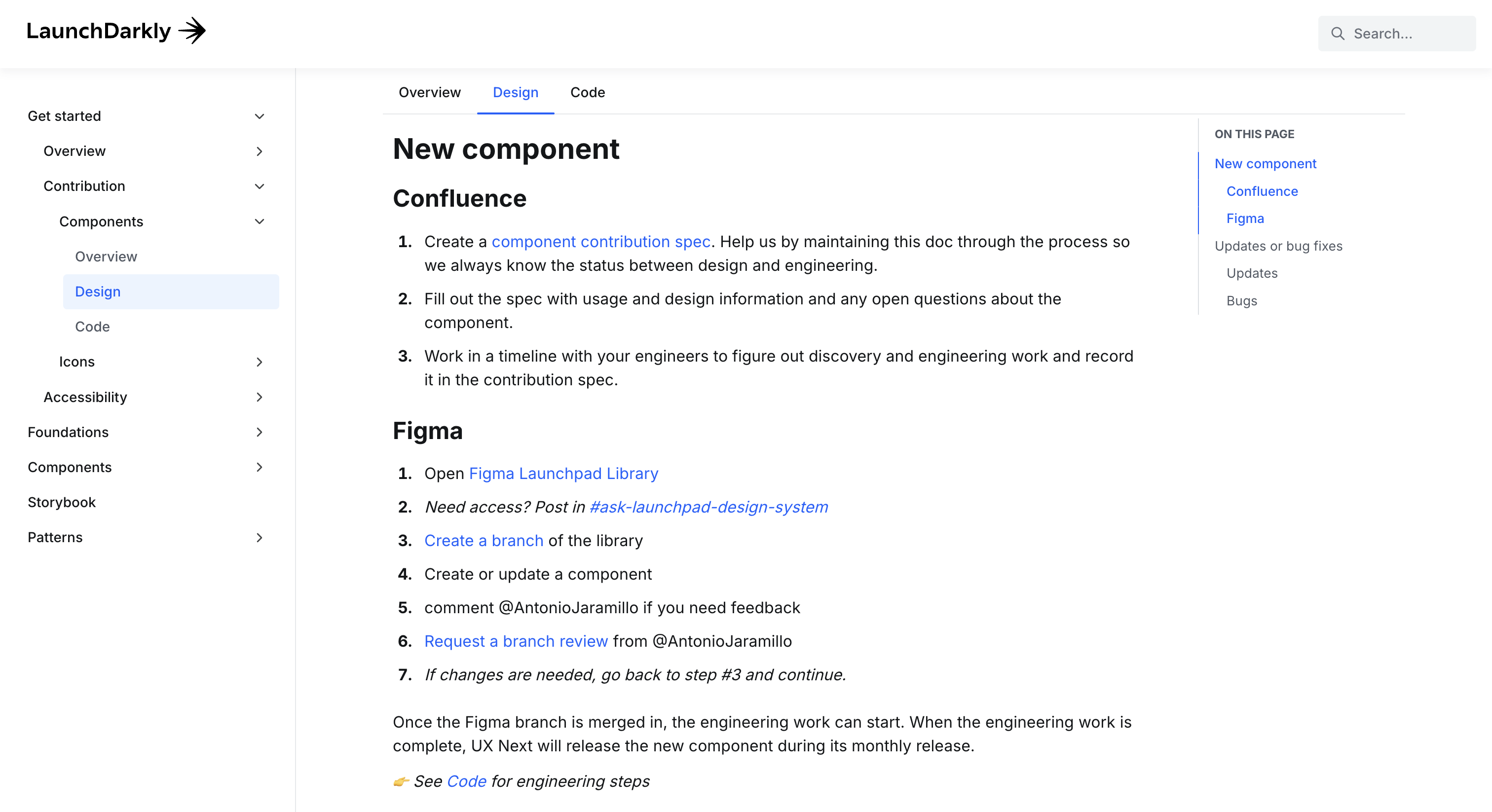
Scaling Your Design System with a Contribution Model
Discover how implementing a contribution model can help your system scale effortlessly while maintaining quality and collaboration.

Discover how implementing a contribution model can help your system scale effortlessly while maintaining quality and collaboration.
As your design system matures, there often comes a time when the influx of requests and the growing complexity of your work surpasses the capacity of your core team. The excitement surrounding the system is percolating, possibly with multiple internal advocates championing it, but the team-to-system ratio starts to feel stretched. This time is the ideal moment to consider implementing a contribution model—one that enables your design system to scale and evolve without putting too much strain on your core team.
Thankfully, other teams have faced this challenge before and generated creative solutions to get their system to the next level. Let’s take a look at how leading teams implement contribution models and the systems in place to make the process efficient and sustainable.
A contribution model is a set of defined guidelines and processes that allow contributors—typically team members from outside the core design system team—to add to the system. It encourages participation from different product teams, helping them leverage pre-existing solutions without reinventing the wheel. By empowering contributors to share their solutions, the design system can grow at a faster rate while maintaining quality.
A well-structured contribution model also opens up feedback loops. Team members can submit suggestions, propose new components, or share ideas for future improvements. This collective input ensures the system remains dynamic, adaptable, and in-sync with the evolving needs of the organization.
For design teams, the contribution model needs clear criteria to determine which components are eligible for inclusion in the system. These criteria ensure that every new addition aligns with the system's overall design philosophy, maintains consistency, and meets the established quality standards.
Leveraging tools like Figma with its version control and collaboration features is a great way to streamline design contributions. Designers can propose changes, and with built-in review processes, those changes can be fine-tuned and integrated efficiently. By ensuring that every proposed component adheres to guidelines and gets proper oversight, your system will avoid redundancy and ensure cohesiveness.
On the engineering side, an automated token pipeline is essential. Having a well-defined pipeline ensures that contributions from developers are technically sound and adhere to the system’s coding standards. This approach reduces friction when integrating new elements and makes the process more scalable.
Besides automation, well-documented coding standards are crucial for contributions. By creating thorough documentation, engineers outside the core team can understand how to contribute effectively, reducing the burden on the design system team and ensuring that new contributions are easy to integrate and maintain.
Documentation is the backbone of any successful contribution model. Clear and accessible documentation ensures that anyone contributing knows the process from start to finish. Tools like Supernova, with its approval workflows and review processes, offer an easy way to manage contributions, maintain transparency, and ensure that all new components are fully vetted before going live.
Many organizations have already implemented innovative contribution models that can serve as inspiration:
Known for its open-source philosophy, the Dutch Government’s design system fosters a collaborative and knowledge-sharing culture. They’ve adopted a "Relay Model," which ensures contributions flow smoothly between teams and are thoroughly reviewed, making their design system evolve in a structured, cooperative way.

Nitro’s team has implemented a contribution model that includes an open feedback loop. Using forms, team members can submit token requests, encouraging continuous improvements and making it easy for contributors to propose changes.

LaunchDarkly simplifies its contribution process by thoroughly documenting each step. This clarity allows contributors to navigate the system easily, ensuring that new components or updates follow the proper procedures and meet the system’s standards.

GitLab’s Pajamas is recognized for its transparent and open approach to contributions. By creating a welcoming environment for feedback and making the process accessible, GitLab ensures that its design system evolves in sync with the needs of the entire organization.

By adopting a contribution model, your design system can scale beyond the limits of the core team. It empowers different teams across your organization to contribute their expertise, making the design system more robust, versatile, and adaptable. This distributed model not only accelerates the evolution of the system but also fosters a culture of collaboration and shared ownership.
A contribution model can future-proof your design system by ensuring that it grows organically, integrating solutions from various teams while maintaining consistency and quality. As your system expands, the contribution model becomes the key to keeping it manageable, scalable, and relevant.